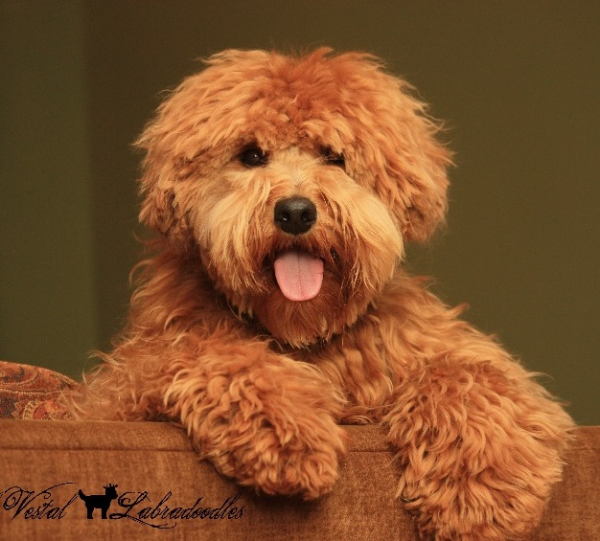

Australian Labradoodle Coat Types & Colors
Exploring The Look of Australian Labradoodles 
Australian Labradoodles are celebrated for their diverse, allergy-friendly coats and stunning range of colors. Understanding coat types and color variations can help you choose the perfect companion for your family and lifestyle.
Coat Types: Texture, Shedding & Care
Australian Labradoodles come in three main coat types, each with its own look, feel, and grooming needs. Fleece coats are the most popular thanks to their soft texture and low maintenance. Wool coats suit those with severe allergies but require more grooming. Hair coats tend to shed and aren't ideal for allergy-prone families. Regardless of coat type, regular brushing prevents matting and keeps your Labradoodle looking its best. During adolescence (8–12 months), grooming needs increase as the coat transitions.
Fleece Coat
- Description & Texture: Soft, silky, “chenille” feel; can be wavy or curly.
- Shedding & Allergy: Low to non-shedding; allergy-friendly.
- Grooming Needs: Weekly brushing; clip 3–4 times/year.
- Best For: Most families, allergy sufferers.
Wool Coat
- Description & Texture: Dense, springy, tightly curled (like a poodle).
- Shedding & Allergy: Non-shedding; most hypoallergenic.
- Grooming Needs: Frequent brushing; clip every 5–6 weeks.
- Best For: Severe allergy/asthma sufferers.
Hair Coat
- Description & Texture: Coarse, flat or slightly wavy; resembles a Labrador.
- Shedding & Allergy: Sheds moderately; not allergy-friendly
- Grooming Needs: Minimal grooming; regular brushing.
- Best For: Non-allergic homes, low-maintenance seekers.
Color Spectrum: From Classic to Rare
Australian Labradoodles display a remarkable range of colors and patterns, with some shades staying consistent while others lighten or change as the dog matures. Rare colors like red, blue, and lavender are especially prized and can be harder to find. Patterns such as parti (spotted) and phantom (tan points) add even more variety. Color does not affect temperament or personality.
- Black: Deep, glossy black; can fade to silver; classic, striking look.
- White: Bright, clean white; elegant and rare.
- Cream/Apricot/Gold: Warm hues from pale cream to rich gold; may fade with age.
- Caramel: Rich gold or apricot tones; varies from light to dark.
- Red: Intense, solid red; rare and may fade over time.
- Chocolate: Rich dark brown; may lighten to café; born nearly black.
- Café: Lightens from milk chocolate to silvery tones over 1–3 years.
- Lavender: Smoky, lilac-tinted chocolate; rare and unique.
- Parchment: Creamy beige developed from milk chocolate; changes over 1–3 years.
- Silver: Shades from tin to charcoal; born black and lightens with age, full color in 1–3 years.
- Blue: Smokey blue-grey with blue skin undertones; born black and considered rare.
- Parti/Phantom: Two or more distinct colors or patterns; eye-catching and highly sought after.
Choosing & Caring for Your Labradoodle’s Coat
- Allergy Considerations: Fleece and wool coats are best for allergy sufferers.
- Grooming: All coat types benefit from regular brushing and periodic trims to prevent matting and maintain health.
- Color Changes: Many Labradoodle puppies experience color shifts as they mature—especially chocolates, silvers, and café shades.
- Ask Your Breeder: A reputable breeder can help predict coat type and color based on the puppy’s lineage, but some surprises are always possible.
Have a look at our Labradoodles for sale in the Midwest to find your new friend.



 Hartford, WI
Hartford, WI



